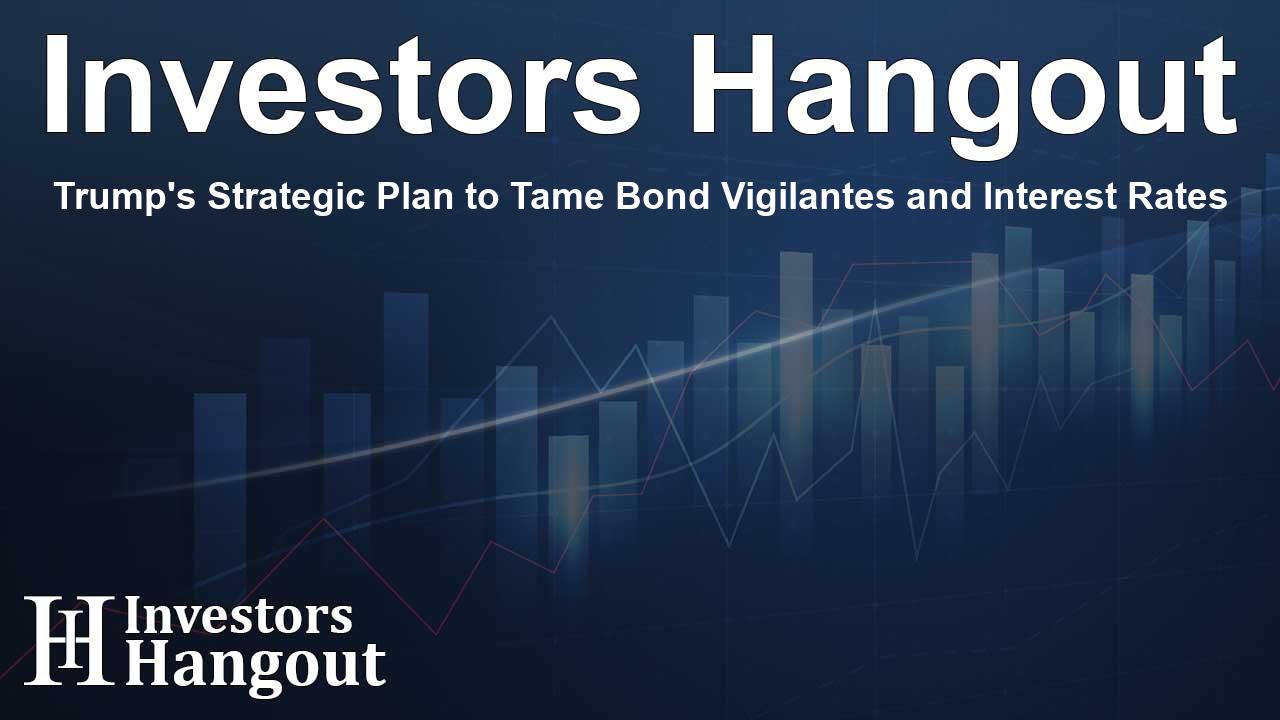Trump's Strategic Plan to Tame Bond Vigilantes and Interest Rates

Trump’s Vision for Lower Interest Rates
President Donald Trump has consistently voiced his desire for lower interest rates, placing blame on Fed Chair Jerome Powell for maintaining rates he deems excessively high. His criticism isn't new and has been echoed since his first presidential term. Recently, he emphasized this stance once again, expressing that rates should ideally be at 1%.
“I think we should be paying 1% right now, and we’re paying more because of a phenomenon I term Trump Derangement Syndrome,” he stated, urging Powell to consider resigning due to his perceived mismanagement.
Trump’s frustration has not only been directed at Powell but also at the so-called Bond Vigilantes—investors who act in response to government fiscal actions. The President faced significant pressures on April 9 when he was compelled to delay his proposed tariffs due to surges in bond yields that resulted from market instability. He openly admitted being attentive to the bond market's volatility during that time.
“I was watching the bond market. It’s quite tricky; however, now it appears very favorable,” Trump noted.
His expectations hinge on the notion that should the Federal Reserve lower interest rates, it could lead to a downward shift across the entire yield curve. This, he believes, would result in substantial savings for the US federal government, potentially amounting to hundreds of billions of dollars. Recently, Trump shared a handwritten message to Powell, reiterating the urgent need for action.
“You are, as usual, too late,” he wrote. “You have cost the USA a fortune and continue to do so. You should substantially lower interest rates!”
However, Trump is aware that bond yields may not automatically decrease alongside short-term interest rates. Past experiences have taught him that the actions of Bond Vigilantes could counteract any victory derived from rate cuts. This has been notably evident in previous economic adjustments that fluctuated bond yields unexpectedly.
Trump’s Approach to the National Debt
In a recent interview, Trump outlined a proactive approach to addressing the staggering national debt—reportedly hitting $9 trillion due this year alone. He proposed refinancing this debt into short-term obligations, citing the necessity for action due to the current leadership at the Fed. There’s a confident tone in his strategy, aiming to appoint a new figure at the Federal Reserve who aligns with his objective to lower rates.
“Then we’re gonna get somebody into the Fed who’s going to be able to lower [the rates].”
Pointing to Switzerland’s low interest rates, Trump argued that the US should aim for similarly advantageous rates. His plan includes increasing the issuance of short-term Treasury bills while reducing the release of longer-term notes and bonds until a new Fed chair can implement the desired reductions.
While the plan might seem revolutionary, it is not without complications. Currently, Powell’s term doesn't expire until May 2026, though he may remain in a governing role until 2028. Trump could potentially replace Fed Governor Adriana D. Kugler, who has an expiring term in early 2026, with a trusted ally.
Nonetheless, maintaining a cohesive monetary policy will require agreement among the Federal Open Market Committee’s voting members, where even a loyal Trump appointee could face opposition. Historically, Fed chairs have successfully navigated dissent towards their policy agendas, but internal conflicts remain a possibility.
Potential Challenges Ahead
The next appointee to the Fed, chosen by Trump, may encounter significant challenges steering policy in line with his vision. There could be overwhelming dissenting opinions from committee members who may disagree with the proposed rate cuts, even if justified by economic indicators. This risk of internal discord could dilute the newly appointed chair’s influence.
Moreover, if this loyalist were to approve unwarranted cuts, it could provoke reactions similar to those seen in late 2023, when Bond Vigilantes retaliated against inappropriate monetary decisions by increasing bond yields. The Treasury may then find itself requiring additional short-term Treasury bill issuances to manage yield pressures and adapt to market responses.
In summation, while Trump’s initiatives showcase a bold ambition to reshape fiscal and monetary policy, the road ahead appears cluttered with obstacles that could thwart his efforts. As the situation unfolds, both policymakers and investors will be keenly observing the interplay of policy decisions and market reactions.
Frequently Asked Questions
What are Trump's proposed measures for interest rates?
Trump advocates for significantly lower interest rates, aiming for around 1% to reduce the national debt burden.
Who does Trump blame for high interest rates?
The President primarily holds Fed Chair Jerome Powell accountable for keeping rates excessively high.
What strategy does Trump plan to address the national debt?
He plans to refinance the debt into short-term obligations until a new Fed chair can lower rates further.
What challenges might Trump's plan face?
The plan could be obstructed by dissent within the Federal Open Market Committee and resistance from the Bond Vigilantes.
What is the significance of the Bond Vigilantes in this context?
They are responsive investors who can influence bond yields based on fiscal policy decisions, potentially countering Trump’s strategy.
About The Author
Contact Ryan Hughes privately here. Or send an email with ATTN: Ryan Hughes as the subject to contact@investorshangout.com.
About Investors Hangout
Investors Hangout is a leading online stock forum for financial discussion and learning, offering a wide range of free tools and resources. It draws in traders of all levels, who exchange market knowledge, investigate trading tactics, and keep an eye on industry developments in real time. Featuring financial articles, stock message boards, quotes, charts, company profiles, and live news updates. Through cooperative learning and a wealth of informational resources, it helps users from novices creating their first portfolios to experts honing their techniques. Join Investors Hangout today: https://investorshangout.com/
The content of this article is based on factual, publicly available information and does not represent legal, financial, or investment advice. Investors Hangout does not offer financial advice, and the author is not a licensed financial advisor. Consult a qualified advisor before making any financial or investment decisions based on this article. This article should not be considered advice to purchase, sell, or hold any securities or other investments. If any of the material provided here is inaccurate, please contact us for corrections.
